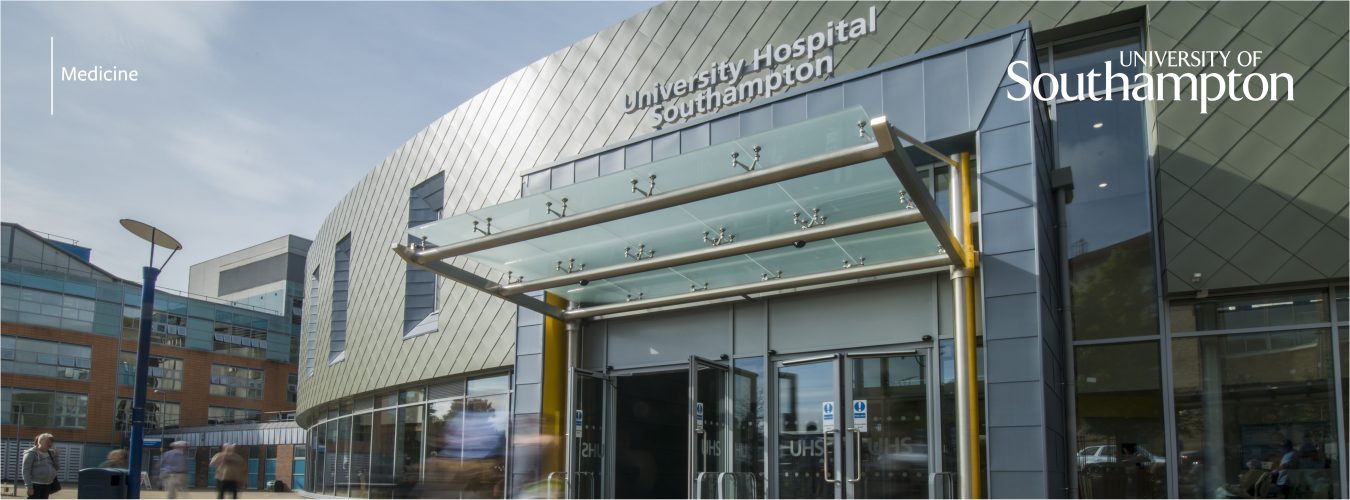‘Inspiring Stories’ with Rebecca Kinge
Community worker with Southampton Voluntary Services and Southampton Collective
This is part of the Engaged Medicine ‘Inspiring Stories’ blog series. The blogs explore the stories behind outreach and patient-public engagement activities of staff and students from the University of Southampton’s Faculty of Medicine. This blog is written by Rebecca Kinge, a community worker with Southampton Voluntary Services and Southampton Collective. Rebecca helped establish a network called Southampton Coproduction Corner, which received funding from the Centre for Policy South with Professor Lucy Green. Rebecca’s blog has been written from a personal perspective. It has had the kind input of Clare Diaper, who has been collaborating with Rebecca for years on community projects.
Nothing about us without us
People in communities have a wealth of experience and brilliant ideas for healthy futures where people could thrive. But who is listening? If people aren’t asked, they can’t share the benefit of their insight and experience.
We hear daily about health and care services where the needs of patients and the public seem to be overlooked. Sometimes, this has devastating effects. Other times, the impact is not life or death but leads to poorer quality of life. And we all know that small things can cumulatively have a significant effect.
Coproduction, yes, but what does that mean?
Coproduction can feel like a throwaway word, used to give credibility to a project and interchangeably with “consultation” or “community involvement.” It’s not coproduction if the voice and views of those in charge remain dominant and real-life experience is treated like an “add-on.”
If you’d like a definition, check out Coproduction Collective, which describes coproduction as:
“Co-production is an approach to working together in equal partnership and for equal benefit.”
Our approach with our Coproduction Corner work has been to explore the concepts over time. This experiential learning will help us decide on a definition.
Coproduction is a mindset
For me, coproduction is more than asking a few people to sit around the table with you. It’s a mindset, a process that encompasses:
(1) how we reach out and are inclusive;
(2) the way we build on existing knowledge and real-life experience;
(3) the environment we create to allow honest and meaningful conversations to flourish;
(4) how those conversations are hosted, with active listening as a central component;
(5) shared decision-making; and
(6) a constant process of reflection.
Thinking carefully and chatting it through
Here are some suggestions for successful coproduction.
Develop your coproduction skills with others. Listen, talk, share, and learn together.
Check what’s happened before. People don’t want to feel like previous engagement has been forgotten.
What’s your starting point? Do you have an open mindset? Your outcomes won’t be set from the start. Be flexible and willing to change direction along the way.
Do you have time? Coproduction is not a quick process, but it has profound impacts if done well.
What motivates people to get involved? Ask!
Be inclusive and reach out to people who have not been heard before. Check out our short guide to being inclusive. Have a robust Equality, Diversity, and Inclusion approach.
What makes people feel welcome and safe? Don’t assume you know. Lean into the factors that might make people feel intimidated, or like they don’t belong.
Budget for it. Distribute money to participants. Invest in your community connections.
Involve community organisations. They make great equal partners and can play a crucial role in helping you reach out.
Take time to build trust. If trust is lost, the foundation of all your work will be undermined.
Power, hierarchy, and decision-making. Develop equal power relationships and ensure people with real-life experience are equally involved in decision-making.
Consider your “calling questions.” Make sure people have the space to say what matters to them most.
Develop a listening environment. Use techniques that make sure all people are heard. For example, we use Design for Wiser Action.
Keep moving towards the shared goal. And if the project needs to end, plan the ending well.
Reflect and evaluate. Build time and energy for reflective conversations and embedding a culture of ongoing evaluation.
Communicate. Great projects can happen behind closed doors. It’s important that you tell people what you are up to.
Celebrate your successes. People need to know that their involvement has made a difference and was worthwhile.
What does this mean for universities?
There is considerable potential for communities, students, researchers, and universities to work together for mutual benefit.
To achieve success, we must address some power imbalances and cultural differences between universities and communities. The processes and language universities sometimes use when engaging with people and communities can be a real barrier to involvement. Ethics processes can be pretty impenetrable and not always people-focused.
I’m sure universities find communities can be hard to engage with, too. People and community groups have a range of priorities, and these don’t always align with research timescales, expectations, or needs. We will highlight some of these issues as part of the evaluation of our coproduction work later in 2024.
Researchers can sometimes find it hard to let go of their own agendas. This is where differing conversation techniques can help. Our blogs explain some of the strategies we have tried out.
Thank you for reading this
I certainly have lots of work to do to develop my skills around the above, and I hope to do this alongside people like you. Please share your thoughts with me via LinkedIn or Facebook (“Rebecca Southampton”) or join our Coproduction Corner sessions.
Stay Connected! To find out more about the ‘Inspiring Stories’ series, Faculty of Medicine educational programmes and research, or to get involved use the links below or contact Professor Lucy Green.

University staff or students click here for the Engaged Medicine SharePoint.


